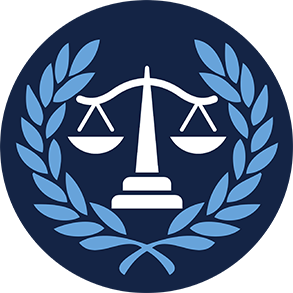Press Releases
House Judiciary Committee Seeks Answers on Series of Secret Service Failures
Washington, DC,
October 9, 2014
Tags:
Government Oversight
Today, House Judiciary Committee Chairman Bob Goodlatte (R-Va.), Ranking Member John Conyers (D-Mich.), and House Judiciary Subcommittee on Crime, Terrorism, Homeland Security, and Investigations Subcommittee Chairman Jim Sensenbrenner (R-Wisc.) and Ranking Member Bobby Scott (D-Va.) sent a letter to Acting Secret Service Director Joseph Clancy seeking answers to over a dozen questions regarding a series of security breaches that occurred at the White House complex and during official travel. The House Judiciary Committee, which has primary jurisdiction over the Secret Service, including its critical role in protecting the President and the White House complex, will hold both public and classified hearings in November to examine ongoing issues at the agency. In preparation for the hearings, Chairman Goodlatte, Ranking Member Conyers, Crime Subcommittee Chairman Sensenbrenner, and Crime Subcommittee Ranking Member Scott write: “In light of recent events and evident security failures, the House Judiciary Committee has grave concerns about the policies, procedures, and judgment of the United States Secret Service. “As you know, on September 19, 2014, Omar Gonzalez scaled the White House fence, evaded numerous Secret Service officers outside of the White House, and forced his way through the front door armed with a knife. It now appears that Mr. Gonzalez made it into the East Room of the White House, despite initial claims by the Secret Service that he was apprehended just inside the North Portico doors. Additionally, three days earlier, an armed security contractor with a criminal record was allowed on an elevator with the President during a visit to the Center for Disease Control in Atlanta. This apparent security lapse was similarly not disclosed until media reports began to surface. “As members of the Committee of primary jurisdiction over many of the Secret Service’s functions, including its critical role in protecting the President and the White House complex, we are deeply concerned with the Service’s ability to effectively identify, intercept, and disrupt threats to the President of the United States. In order to facility our ability to conduct effective oversight over the Service and recent security lapses, please respond to the following questions as soon as possible: 1. Please provide a detailed timeline of the events involving Omar Gonzalez on September 19, 2014, including which Secret Service teams or units were involved. 2. Why did the Service initially report publicly and to Congress that Mr. Gonzalez was stopped and arrested just inside the front door of the White House, given that this is not true? 3. Did the Service follow the protocol(s) it has in place to interdict individuals such as Mr. Gonzalez? If not, why not? 4. What specific steps are the Service and the Department of Homeland Security taking to review and revise its policies and procedures for securing the White House complex in response to the events on September 19, 2014? When will this review be completed? 5. Will any review of the September 19, 2014, events include a review of how information regarding the suspect prior to that date was handled, including information gathered by Secret Service investigators following Mr. Gonzalez’s arrest on July 19, 2014? 6. Do you intend to review the White House’s infrastructure for security risks? Which other agencies or offices must approve any recommended improvements? 7. It has been reported that there have been 16 incidents of unauthorized persons jumping over or attempting to jump over the White House fence in the past five years. Six such incidents have occurred this year alone. What had the Service done prior to September 19, 2014, in response to the recent increase in intruders on White House grounds? 8. Why was the North Portico door to the White House unlocked on a Friday evening? Was the door equipped with an auto-locking mechanism to protect against such incidents? If not, why not? 9. With respect to the incident of September 16, 2014, were the policies and procedures in place at the time followed? If not, why not? 10. What steps is the Service taking to review and revise its policies and procedures for handling third-party security contractors? Specifically, what is your policy for determining when third-parties may be armed while in the proximity of the President or another protected individual? 11. Did the contractor involved in the September 16, 2014, event have a criminal record? Was the Service aware of this prior to the President’s visit? If not, why not? 12. Please describe the process of excluding someone with a criminal record from access to the President. Is this solely a decision for the Service? 13. According to a recent report on the Best Places to Work, the Secret Service ranks 226 out of 300 federal agencies. As one example, it has been reported that the concerns of officers involved in the 2011 shooting incident were not properly heeded. As low morale can often lead to poor performance, what do you intend to do going forward to address this problem generally, and to promote a culture of openness and accountability at all levels of the agency more specifically? “Thank you for your attention to this important matter. We appreciate your prompt response.” ### Click HERE for a PDF version of the letter. |



